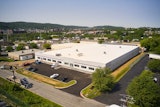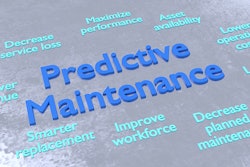The benefits of maintaining a facility with World Class Reliability are enormous and should not be underestimated. The major advantages associated with excellent reliability are high utilization of the asset, low maintenance costs, fewer overall people required to run the facility, better safety performance and better energy efficiency.
Excellent reliability produces an environment that allows for the complete utilization of the asset by maintaining close to maximum capacity. It also keeps maintenance costs consistent, sustainable and generally better than the average. Maintenance organizations in World Class facilities will always be focused on more preventive and predictive activities instead of high priority break in type work. Additionally, maintenance organizations within reliable facilities are very good at planning and scheduling activities because they are not continually fighting equipment failures.
It is not apparent to most people, but when a facility is reliable it requires much less energy to operate because it is always in a stable state. Unreliable facilities are known to be less energy efficient due to the continuous up and down operational state that is the hallmark of unreliable operation.
As a result of good systems, procedures and employee focus, World Class Reliability facilities will always have excellent safety programs.
The Three Pillars
World Class Reliability performance can be considered a worn- out cliché by many because it is so difficult to achieve and never seems to be possible for most manufacturing facilities. In my many years of working in manufacturing and visiting hundreds of facilities around the world, it really comes down to three major pillars that must be addressed before a facility can become an exceptional site.
No. 1 - A strong, consistent management team
Don’t ever underestimate how important it is to have a strong, consistent management team in place. Employees need strong, consistent leadership to make lasting operational changes. When the management team is changing frequently, then we know that this facility is not a candidate for exceptional reliability. A facility needs a management team that is strong, focused and most of all visible to the workforce — these are by far the most effective. A strong, consistent management team is critical in making sure the second pillar can be established.
No. 2 - A reliability culture in place from the top of the organization to the bottom
Until this reliability culture is in place, not even the most advanced and expensive reliability tools will be helpful. Reliability culture is where reliability is everyone’s responsibility and all decisions are made with reliability as a key consideration. For example, consider how a true safety culture works within a manufacturing facility. Safety becomes everyone’s responsibility where all decisions involve a safety review. From the top of the organization to the bottom, everyone is focused on safety. The same holds true with reliability. Everyone in the organization must become personally responsible for reliability and all decisions should include a reliability review. Reliability culture is the most elusive and most important pillar to achieve World Class reliability. This pillar is why most manufacturing facilities fall short.
No. 3 - Established and efficient reliability and maintenance programs
Only after a strong management team and reliability culture is in place, established and efficient reliability and maintenance programs must be put in place and utilized. The reliability program must have a diverse team with enough varied talent to drive the program in both maintenance and operations. The team is responsible for driving preventive maintenance, predictive maintenance, root cause failure analysis, key performance indicators, track action items and provide leadership for continuous improvement.
Many people make the mistake of believing that if we just get more reliability tools in place, then we can make the three pillars of reliability become a reality. Realistically one must have the three pillars in place to ensure the reliability tools will work. Never underestimate the importance of having good tools and systems in place to manage and drive better performance, but also more importantly never underestimate the need to have a reliability culture in place to make sure the tools are used to their highest potential.
Dale Emanuel is a board member at Argo Consulting.























